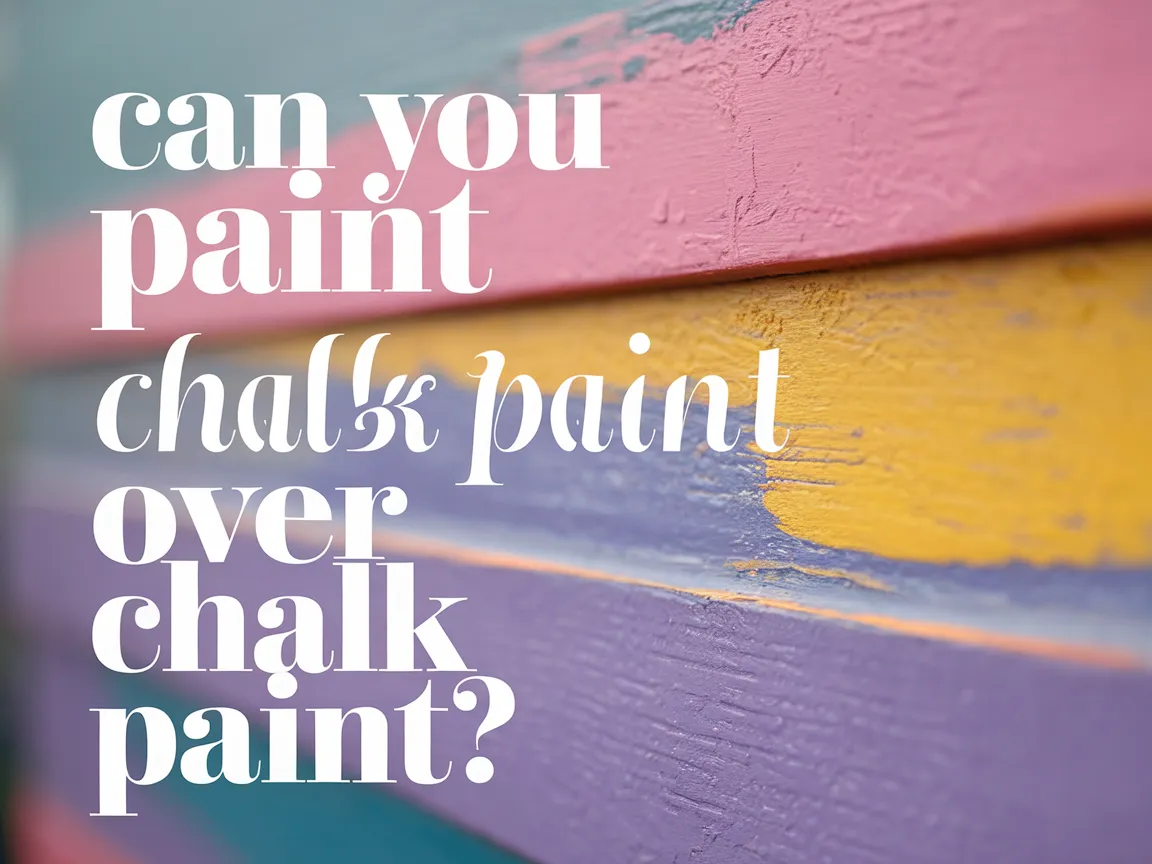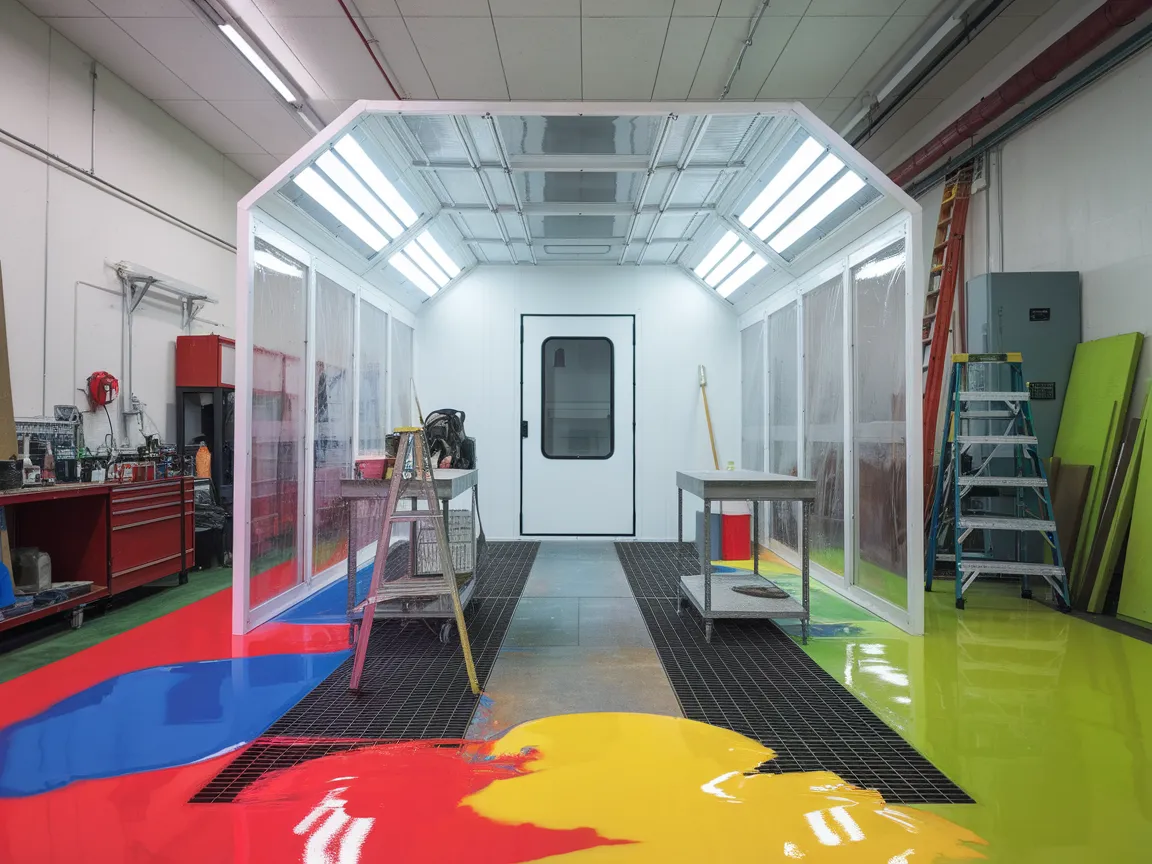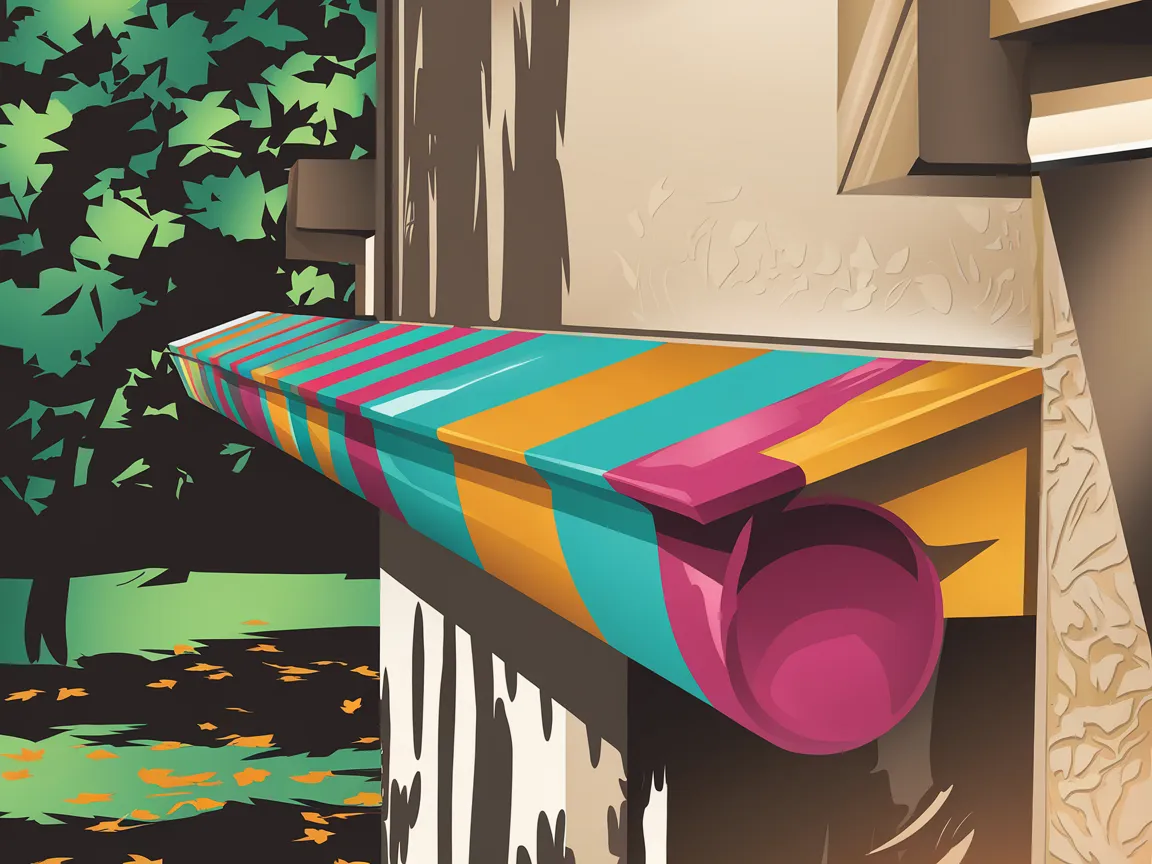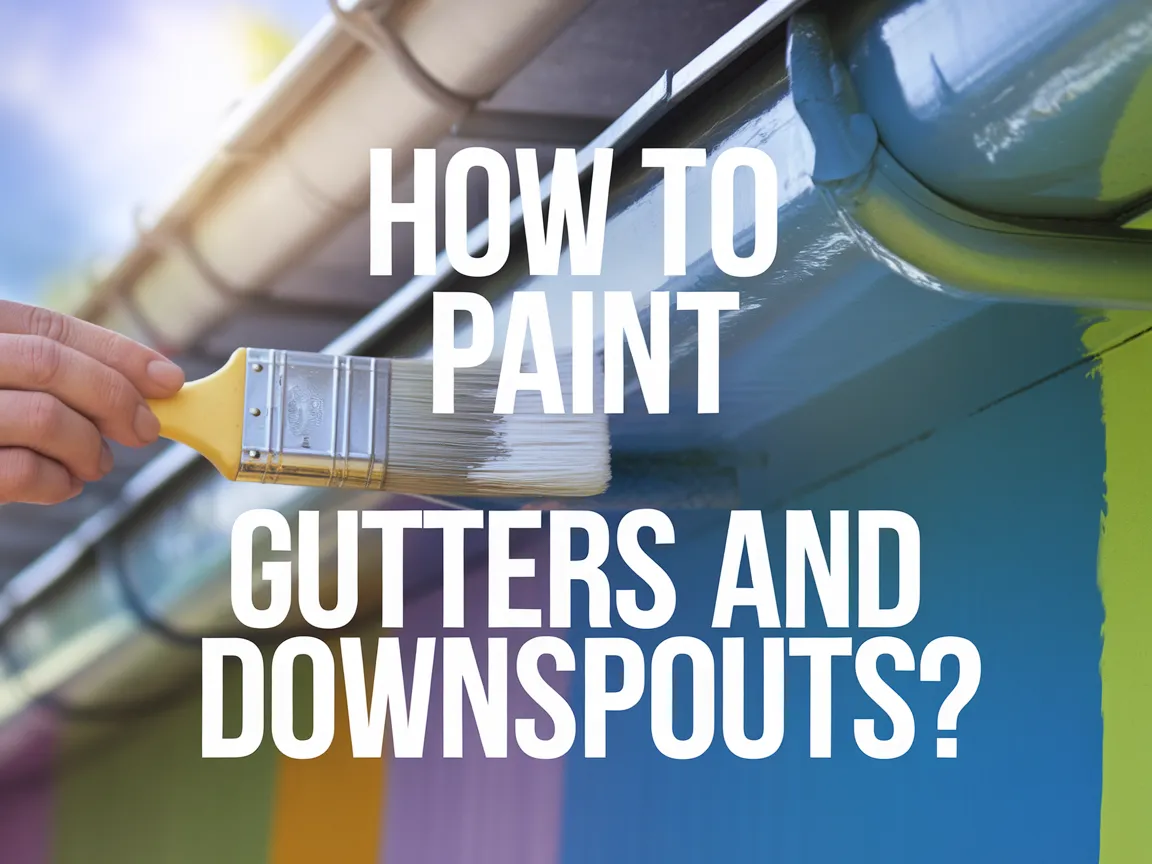What Color to Paint House Foundation?
What’s a house foundation? It’s like the bottom of a cake, holding everything above it! It’s the sturdy base that keeps your house safe and sound.
When you think about what color to paint house foundation, remember how important it is. I once painted mine a light gray, and it really popped against my house’s bright colors. It made my home look even more inviting.
In this article, we’ll cover choosing the right shade, steps to take before painting, suitable paint types, and common issues you might face. We’ll also share DIY project ideas to help you choose that perfect color for your house foundation and much more!
Contents
- 1 What Color to Paint House Foundation?
- 2 What is a House Foundation?
- 3 Before You Start Choosing a Color for Your House Foundation
- 4 Steps to Choose the Right Color for Your House Foundation
- 5 Recommended Color Palette for House Foundations
- 6 Popular Trends in House Foundation Colors
- 7 Comparing Foundation Colors
- 8 Impact of Color on Home Value
- 9 Types Of Paint Suitable for House Foundations
- 10 Factors Affecting Your Choice Of House Foundation Color
- 11 Considerations for Color Harmony with Home Exterior
- 12 Long-Lasting Color Maintenance
- 13 Common Issues When Painting Your House Foundation
- 14 Finishing Touches for Your House Foundation Painting Project
- 15 DIY Project Ideas for Painting House Foundations
- 16 Frequently Asked Questions (FAQs)
- 17 Conclusion
- 18 Useful Resources
What Color to Paint House Foundation?
When thinking about what color to paint your house foundation, choose neutral tones like gray, beige, or white. These colors blend easily with various home styles. They also hide dirt well and resist fading. A solid choice keeps your foundation looking fresh! If you’re curious about applying paint effectively, acrylic paint techniques work wonderfully for different surfaces.
The Finishing Touch
A freshly painted wall is a blank canvas. The best way to bring your room to life is with a single piece of statement art that ties everything together.
Browse Wall Art at Big Wall DecorWhat is a House Foundation?
A house foundation is the structural base that supports the entire building. Typically made of concrete, foundations are about 1 to 3 feet (0.3 To 0.9 Meters) thick and can be a slab-on-grade or a full basement, depending on the design and soil conditions.
Many homeowners get creative and consider what color to paint their house foundation. I once chose a light gray; it gave my home a fresh, modern look while blending well with the brick exterior. If you’re curious about exploring different painting techniques for various surfaces, painting techniques offer versatile options.
I’ve used it before to enhance curb appeal. Knowing how long exterior house paint lasts—usually about 5 to 10 years—helps you plan better. A well-chosen color for your exterior siding can add personality and stand out through the seasons, making a noticeable impact. When tackling detailed painting projects, you might encounter tricky areas that require special techniques painting hard-to-reach surfaces.
Before You Start Choosing a Color for Your House Foundation
What do you need to prepare for?
- Color Samples: Get color samples, like Behr Color Testers (Available in 8 Fl Oz/236.5 Ml). They help you visualize the color against your foundation.
- High-Quality Primer: You’ll need a primer, such as Zinsser 1-2-3 Primer (1 Gallon/3.78 L). It ensures proper adhesion and longer-lasting color stability.
- Masonry Paint: You’ll need masonry paint, like Zinsser Watertite or BEHR Masonry, Stucco & Brick Paint (1 Gallon/3.78 L). It’s designed for durability on foundation surfaces.
- Roller & Brush Set: You’ll need a roller and brush set, like Purdy 140630320, for proper application on textured surfaces.
- Drop Cloths: You’ll need drop cloths, like Linzer 1500-1 (Covers 9 Ft X 12 Ft/2.74 M X 3.66 M), to protect the area from splatter.
So far we covered the considerations for selecting a house foundation color. Let’s look at the steps for choosing the right shade next.
Also See: Can Redgard Be Painted Over? Tips for Best Results
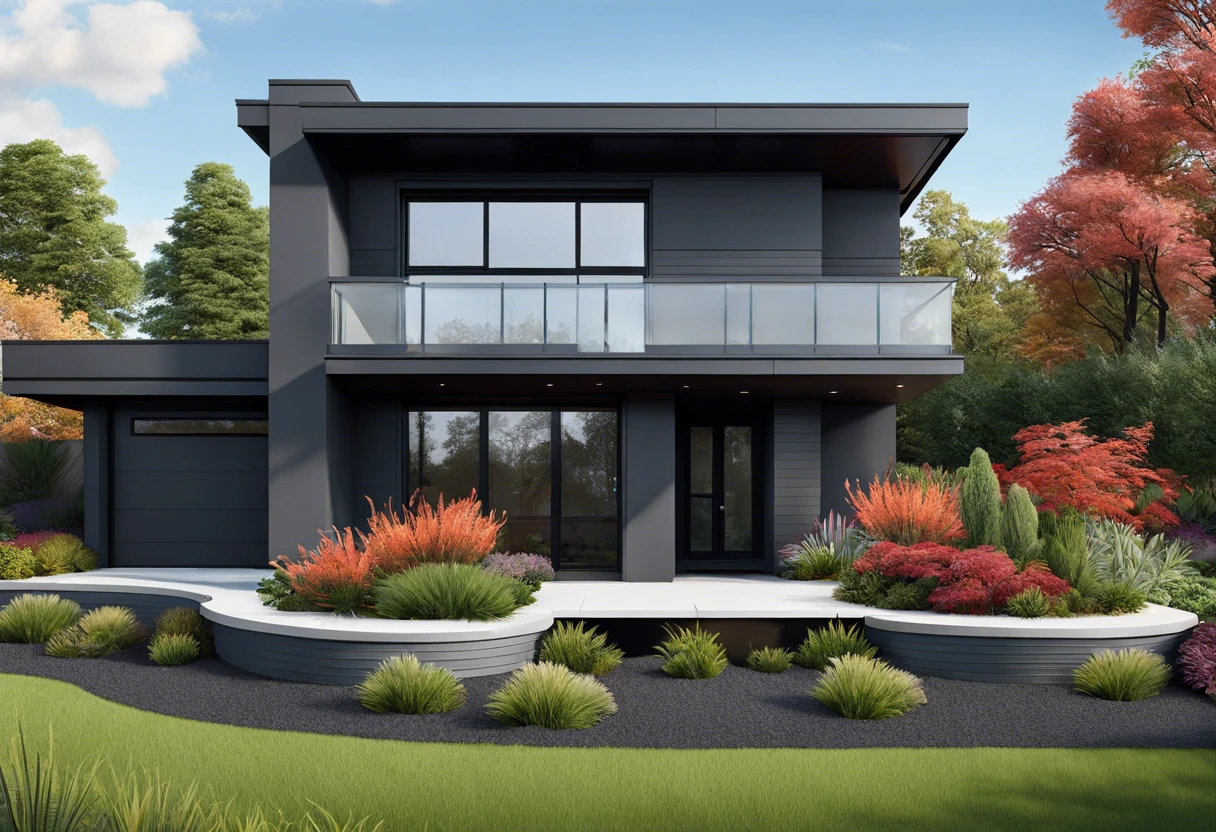
The Finishing Touch
A freshly painted wall is a blank canvas. The best way to bring your room to life is with a single piece of statement art that ties everything together.
Browse Wall Art at Big Wall DecorSteps to Choose the Right Color for Your House Foundation
Here are the steps to select the perfect hue for your home’s foundation.
-
Assess Your Home’s Architecture
Start by examining your house’s style. Is it modern, traditional, or colonial? The foundation color should complement architectural features like window trim or pillars.
For example, if you own a Victorian home, softer colors might enhance its charm, while brighter colors can highlight contemporary designs. I once underestimated how much a foundation’s color affects curb appeal – it can truly anchor your home’s aesthetic.
-
Evaluate Your Surroundings
Explore your neighborhood; it reveals a lot. If most homes have earthy tones, a stark, bright color may feel out of place.
You want to blend in while standing out just enough. Consider landscaping as well; colors that harmonize with local plants can make your foundation appear intentional. If sunlight shines down, lighter pastels reflect rays better than darker shades.
-
Test Color Samples
Get sample paints and apply swatches directly to your foundation. This test can determine your choice – light changes how we perceive color.
I once made a mistake choosing a color based on a tiny chip; leave samples up for a few days. Observe how each color looks at different times – morning light can differ greatly from evening glare. This’ll ensure you’re happy with your selected shade!
So far we covered how to select the best color for your house foundation. Let’s look at the suggested color palette next.
Recommended Color Palette for House Foundations
For a classic yet refreshing vibe, I recommend the “Natural Haven” theme; it ties rustic charm with modern elegance through earthy tones and vibrant accents.
| Color Box | Hex Code | Color Name |
|---|---|---|
| #C1B7A1 | Soft Beige | |
| #A68867 | Warm Taupe | |
| #005B4E | Deep Teal | |
| #B2DCA1 | Pale Mint | |
| #F2A900 | Sunshine Yellow |
We covered recommended color choices for house foundations here. We will now cover popular trends in house foundation colors.
Popular Trends in House Foundation Colors
What’s trending for house foundation colors? Let’s dive into some popular choices right now.
-
Dark Hues
Deep colors like charcoal or navy blue are gaining popularity. They create a striking contrast with lighter home exteriors, adding sophistication.
-
Earthy Tones
Browns, tans, and rich greens connect your home to nature. They blend seamlessly with landscaping.
-
Pastels
Soft colors such as pale blue or mint green offer a fresh and inviting vibe. They brighten the foundation without overwhelming the overall look.
You should now have a good understanding of current house foundation color trends. In the next part, we’ll discuss color comparisons.
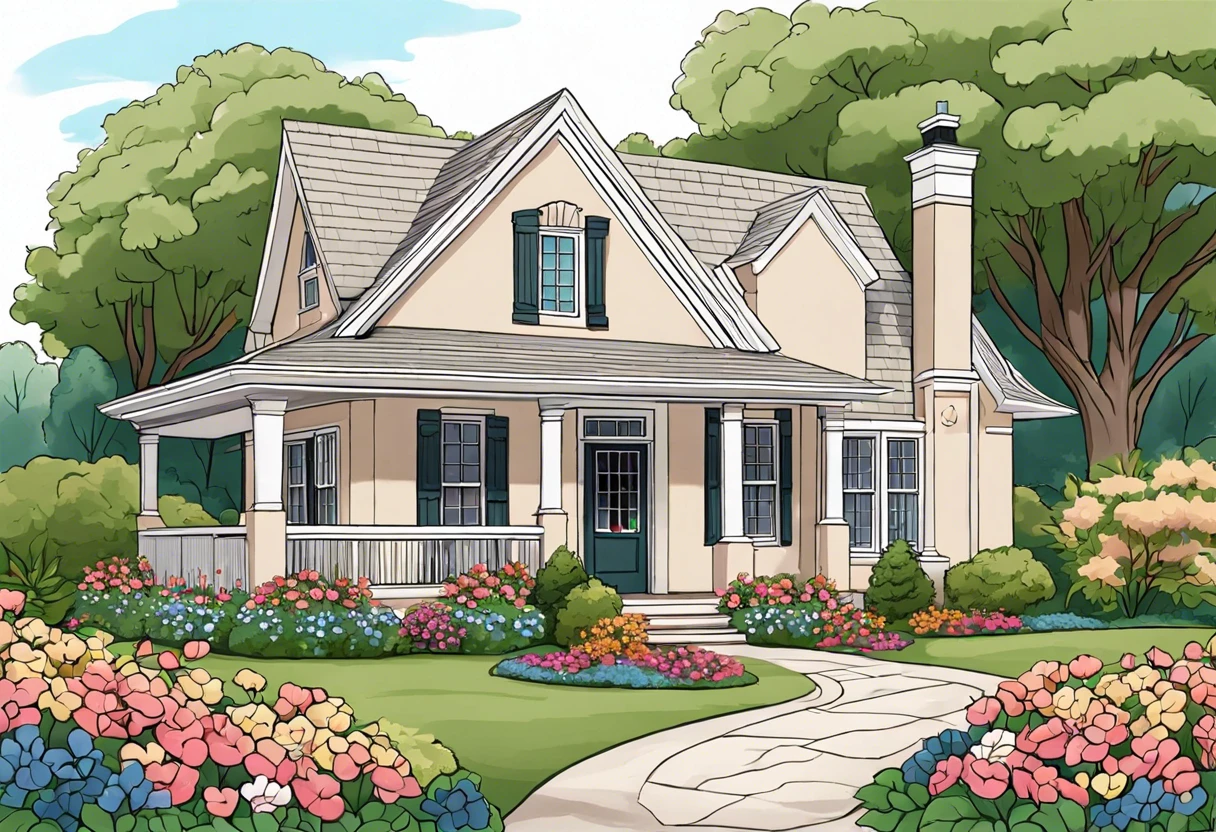
Comparing Foundation Colors
Choosing a color isn’t just about looks; it impacts maintenance and energy efficiency too. Here’s a quick comparison.
| Color Type | Maintenance Level | Energy Efficiency |
|---|---|---|
| Dark Colors | Moderate | Low – absorb heat |
| Earthy Tones | Low | Moderate – good at heat regulation |
| Pastels | Low | High – reflect sunlight |
Impact of Color on Home Value
Did you know the color of your foundation can actually affect your home’s value? Let’s break it down.
- Neutral Colors: Tend to appeal to a wider range of buyers.
- Unique Shades: Can make your home memorable but may limit appeal.
- Well-Maintained Colors: A clean, fresh look can enhance overall value by up to 5%!
Types Of Paint Suitable for House Foundations
Let’s discuss the types of paint you’ll need for your house foundation: Latex, Acrylic, Epoxy, and Masonry paints.
-
Latex Paint
Latex paint is a water-based option with good breathability. It typically lasts 5-10 years and is easy to apply and clean.
-
Acrylic Paint
Acrylic paint is versatile, providing excellent adhesion and color retention. It lasts 10-15 years, offering good durability for foundations.
-
Epoxy Paint
Epoxy paint is a tough choice known for its resistance to moisture and chemicals. If applied correctly, it can last over 20 years, making it a solid long-term option.
-
Masonry Paint
Masonry paint is designed specifically for porous surfaces like concrete and brick. It’s heavy-duty and can last 10-25 years with proper preparation.
Through years of practice, I’ve learned that Epoxy paint is the best choice for foundations. It hardens quickly and keeps your foundation looking fresh longer than most options.
Factors Affecting Your Choice Of House Foundation Color
What factors influence your decision on foundation color?
The Finishing Touch
A freshly painted wall is a blank canvas. The best way to bring your room to life is with a single piece of statement art that ties everything together.
Browse Wall Art at Big Wall Decor-
Neighborhood Aesthetics: Colors should match or complement other homes for a cohesive look.
-
Climate Considerations: Lighter shades reflect sunlight, keeping your home cooler in hot weather.
-
Foundation Material: Different textures and surfaces interact differently with colors, affecting the final appearance.
-
Personal Preference: Your taste matters; a color that resonates with you enhances your home’s character.
Considerations for Color Harmony with Home Exterior
Choosing the right color for your house foundation isn’t just about aesthetics; it creates harmony with your home’s exterior. Let’s explore how to achieve this balance.
-
Match with Home Siding
Look at your siding color. If it’s a bold hue, opt for a neutral foundation color. It’ll complement without competing.
-
Contrast with Trim Colors
Consider the trim color of your home. A contrasting foundation color can make your house stand out beautifully. For instance, if your trim’s a bright white, a dark foundation can offer a stunning contrast.
-
Blending with Roof Color
Don’t forget about your roof! A foundation color that aligns with your roof can provide a coordinated look. If you have a dark roof, a lighter foundation can create visual balance.
Long-Lasting Color Maintenance
Let’s dive into keeping your chosen color vibrant over time.
-
Regular Cleaning
A simple rinse with a garden hose can remove dust and dirt. This prevents fading and discoloration.
-
Monitor for Chipping
Keep an eye out for any chips or peels. Early touch-ups can save you lots of hassle later.
-
Reapply Sealant
Every few years, reapply a waterproof sealant. It enhances color longevity and protects against moisture.
Common Issues When Painting Your House Foundation
My friend struggled to choose a color for his house foundation. He worried it might clash with the walls or fade in sunlight.
To solve this, he should use a color wheel. He should consider durable, UV-resistant paint for a lasting finish—expect 5-10 years outdoors!
Finishing Touches for Your House Foundation Painting Project
After selecting the perfect shade, allow 24 hours for drying at temperatures above 50°F (10°C). Apply a waterproof sealer to prevent moisture damage.
Inspect for missed spots or uneven layering. Use a 9-inch (23 Cm) Purdy roller for touch-ups to maintain a seamless finish on your surface.
I recommend using a moisture meter for precise readings, ensuring your foundation stays healthy after painting. The ideal reading is below 16% moisture content.
For advanced techniques, maintain a 400-micron (0.016 Inch) film thickness for optimal protection. A pneumatic sprayer helps achieve consistent application and fast drying.
Also See: How Many Square Feet Can 5 Gallons Of Paint Cover?
DIY Project Ideas for Painting House Foundations
You can create a stunning look for your home by painting your foundation a fresh, vibrant color. How about adding a funky pattern or using a two-tone scheme? It’s bold, and believe me, it makes a statement!
To get started, gather some exterior-grade paint, a few brushes, and some painter’s tape. Depending on your choice of paint, expect to spend around $50 to $100 and set aside a weekend for the process. If you’re curious about the historical context of painting techniques, you might want to explore where Bosch’s paintings are preserved today.
If you want some alternatives for “what color to paint house foundation,” consider planting low-maintenance flowering plants near the base. They not only look great but contrast beautifully, giving your house a unique frame! If paint accidentally drips during your project, you’ll want to know how to remove paint from clothing quickly.
Frequently Asked Questions (FAQs)
Now let us look at some common questions I typically get asked about house foundations and painting.
How Do I Prepare My House Foundation for Painting?
To prepare your house foundation for painting, you need to ensure it’s clean and dry. Start by power washing the surface to remove dirt, mold, and loose paint. A clean surface helps the new paint adhere better, preventing peeling and enhancing durability. If you’re wondering about the potential costs involved in this painting project, check out average room painting expenses.
Can I Use Regular Exterior Paint on My Foundation?
No, you shouldn’t use regular exterior paint on your foundation. Use a masonry-specific paint for exterior surfaces designed for concrete or brick surfaces. It ensures better adherence and protects against moisture damage, extending the lifespan to around 10 years. If you’re considering painting other exterior surfaces like storm doors, you might want to explore painting aluminum storm doors with the right techniques.
How Often Should I Repaint My House Foundation?
You should repaint your house foundation every 5 to 10 years. Factors like climate, that can contribute to wear, might lead you to repaint more often, especially in harsh weather areas.
Is It Necessary to Seal the Paint on My House Foundation?
Yes, it’s necessary to seal the paint on your house foundation. Sealing provides an added layer of protection against moisture and cracks. It can increase the lifespan of your paint job by up to 25%.
What Tools Do I Need for Painting My House Foundation?
You need brushes, rollers, and a power washer for painting your house foundation. These tools help in effective application and preparation, ensuring a well-finished job. Don’t forget safety gear like gloves and masks!
What is the Ideal Temperature for Painting the Foundation?
The ideal temperature for painting the foundation is between 10°C to 32°C (50°F to 90°F). Painting outside this range can affect the paint’s performance and adhesion. If you’re considering transforming your brick exterior, you might want to explore painting techniques for brick surfaces. Always check the weather before starting your project!
Conclusion
We covered what a house foundation is, how to choose the right color, recommended palettes, suitable types of paint, factors that impact your color choice, and common issues to consider when painting.
To summarize, when deciding what color to paint your house foundation, think about durability and aesthetics; lighter colors reflect sunlight while darker shades absorb it. If you need additional advice, I’m here to help you figure out that perfect shade for your home.
For further insights and resources on this topic, feel free to explore our homepage: Paint Answers.
Useful Resources
- Loomis, A. (2011). Figure Drawing for All It’s Worth. New York, NY: Titan Books.
- What Color Should You Paint House’s Foundation
- How to paint the foundation , choosing the Paint Color and type – YouTube
Experienced interior designer with 15+ years in transforming spaces, blending artistry with expertise in color and design. Rhode Island School of Design graduate, specializing in restorations and modern makeovers.
Exterior, Siding






